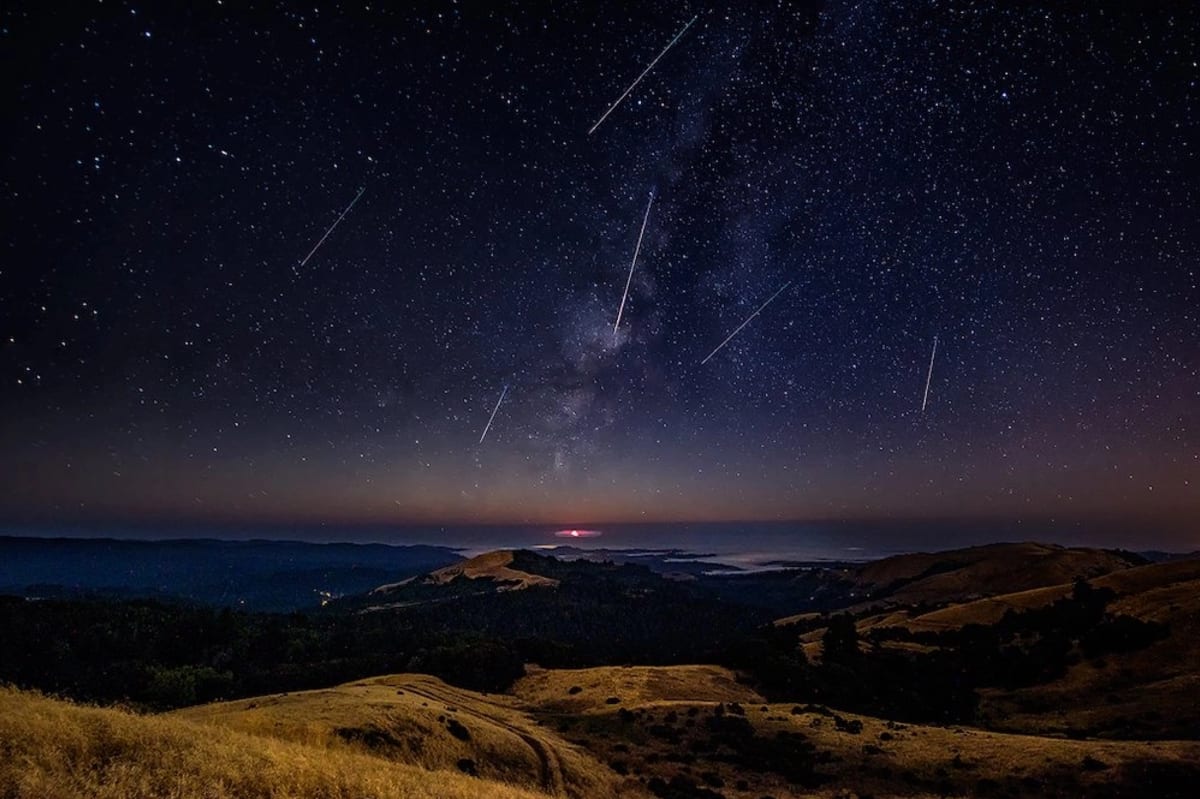(In 2024, the Perseid meteor shower peaks on the mornings of August 11, 12 and 13. Midnight to dawn is best! Be sure to watch in a dark sky.)
Two prominent American musicians incorporated the Perseid phenomenon into their music:
-James Taylor penned a song titled “Fire and Rain” in 1968, which was ultimately released in August of 1970. It was named after the meteor shower.
-Similarly, John Denver included his personal experience of witnessing the Perseid meteor shower during a family camping trip in the mountains near Aspen, Colorado, in his 1972 song “Rocky Mountain High.”
Excerpt from “Artemis Child: a Rain of Stars”:
Maria was content with the connections she had established, however, she desired to expand her knowledge on the Perseid meteor shower and how it acquired its name.
While researching, she found that Chinese astronomers first documented the Perseids in 36 AD.
It was plausible that they were recorded earlier and considered myths. She tapped her fingers on her desk.
After all, Perseus’s conception under a shower of stars was mentioned in ancient texts, suggesting that the constellation and meteor shower were most likely named in his honor when he became a hero and king.
Maria believed that the constellations of Andromeda, Perseus, and Pegasus were named during the same ancient time as the Perseids, possibly at the time Perseus became a hero by beheading Medusa.
However, Maria had not found any writings that confirmed when these universal phenomena were named or who named them.
The mystery of their origin remained unsolved, much like the burial sites of the members of the Perseid dynasty. It seemed as though all the ancient writings related to Perseus and his family had somehow vanished into thin air.
Continuing her research, Maria discovered that the Perseids were renowned for their brightness, speed, and long fiery tails, making them one of the most impressive meteor shower events of the year. And that despite originating from the north-northeast of the Perseus constellation, the Perseids can be seen throughout the sky rather than a specific area. Also, that:
• Perseus is one of the larger northern constellations. It was first catalogued by the Greek astronomer Ptolemy in the 2nd century. The constellation is best known for its annual Perseid meteor shower.
• It is also home to the famous variable star Algol, Beta Persei. Perseus also contains a number of famous deep sky objects, among them Messier 34, the Double Cluster, the California Nebula (NGC 1499) and the Little Dumbbell Nebula (Messier 76).
• The constellation of Perseus is the 24th largest in the sky, occupying an area of 615 square degrees. It is located in the first quadrant of the northern hemi- sphere (NQ1) and can be seen at latitudes between +90° and -35°.
Maria then came across another article which stated that the comet responsible for the meteor shower was Swift-Tuttle.This comet was known to be the largest object, with a 16 miles wide nucleus, that passes by Earth. She conducted further research to learn more about the Swift-Tuttle comet:
• The last time it passed near Earth during its orbit around the sun was in 1992 and the next time it will be that close will be in 2126.
• The Perseid meteor shower is made up of dust and debris of the comet as they burn up in Earth’s atmo- sphere, for they are traveling quickly at around 37 miles per second.
• Even though the comet only passes by Earth every 133 years, the meteor shower occurs every year when earth moves through the trail of its orbit and that stream of debris which stretches along the orbit of the Swift–Tuttle comet is called the Perseid Cloud.
• It is believed that most of the debris particles have been part of the Perseid Cloud for over a thousand years.
• The famous Double Cluster, which consists of two open clusters of masses and is visible to the naked eye all year round, is located within the constellation Perseus.
• Both “the rain of stars” along with the constellation they came from were named after the legendary hero Perseus––a demigod of ancient Greek mythology.
It was now understood that the dazzling flashes of light in the sky occur because of Earth’s yearly encounter with the remnants of the Swift-Tuttle comet, which is often referred to as a cosmic litterbug.
The Perseids are small pieces of cometary debris composed of numerous metallic and rocky fragments known as meteoroids, which transform into meteors upon entering the Earth’s atmosphere.
The luminous trails we refer to as “shooting” or “falling” stars are produced by the air surrounding the meteors, which are heated to incandescence by the objects’ plunge through the atmosphere.
Excerpt fro ‘Artemis Child: a Rain of Stars’ second book of the Peloponnese series:
